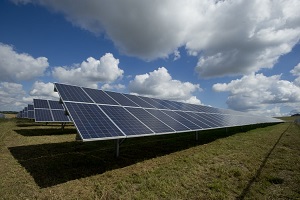New research from UK-based analysts, Transforma Insights, along with 6GWorld and InterDigital, outlines how IoT will positively impact air, water and energy resource consumption.
Could sustainability be the driver for increased IoT deployment that the technology industry has been waiting for? Informed by a new report released by Transforma Insights and 6GWorld and sponsored by InterDigital, Inc, there’s a case to be made.
According to the report, by 2030 IoT deployment and its disruption of various industries is expected to save more than eight times the energy it consumes, result in net savings of 230 billion cubic metres of water, and eliminate one gigaton of CO2 emissions.
The report, Sustainability in New and Emerging Technologies, explores the impact that new and emerging technologies will have on electricity, fuel and water usage, CO2 emissions, and eWaste. The report looks at the incremental impact of new technologies by examining the resource impact of enterprise and commercial technologies compared to a world without it.
Key findings from the report reveal that by 2030:
- IoT solutions will reduce electricity consumption by more than 1.6 petawatt-hours (PWh), enough electricity to support more than 136.5 million homes’ energy use for one year.
- IoT’s net effect on fuel consumption will reach a yearly 3.5 PWh reduction of (hydrocarbon) fuel.
- IoT devices and emerging technologies will conserve nearly 230 billion cubic metres of water; 35% of this impact will result from improved smart water grid operations, and remaining water savings will be supplemented by IoT-enabled agricultural applications like crop management and remote pest control.
- The manufacturing of new and emerging IoT technologies is expected to increase global electricity use by 34 terawatt-hours (TWh) but will be offset by the more than 1.6 PWh of electricity conserved by IoT solutions.
- IoT will result in an additional 53 TWh of fuel used for distribution and deployment of solutions. This distribution and deployment will generate incremental eWaste, including additional hardware per device and increased levels of device shipments. The overall impact will be more than 657,000 tons of eWaste.
- IoT solutions will collectively enable one gigatons benefit in CO2 emissions. The impact on CO2 emission is notably lower in regions that have a greater representation of renewable energy in their generating profile.
“In every area of technology, researchers, governing bodies, regulators and standards-setting organisations are expanding their field of vision to include the social, economic and environmental components that impact, and are impacted by, new solutions,” says Henry Tirri, chief technology officer, InterDigital.
“IoT is a technology that we believe can and will transform our world, and its place at the centre of 5G and eventual 6G development highlights the tremendously positive impact that the work of InterDigital and others is having in providing solutions for an improved world.”
The report also spotlights the difference in energy and resource usage in enterprise and commercial solutions. Enterprise-based IoT capabilities are typically incorporated if they increase efficiency or produce a net economic benefit, often in the form of reduced electricity, fuel, or water consumption.
Conversely, connected consumer devices dominate IoT and have a considerable sustainability impact because they typically consume more electricity than their non-connected counterparts. In consumer solutions, IoT capabilities are added to improve the user proposition and tend to be net electricity consumers.
“It is clear that developing and deploying new technologies has a sustainability footprint, but it’s important to note that many enterprise applications are deployed in order to increase efficiency, and the efficiencies generally outweigh the footprints of the solutions themselves,” says Jim Morrish, founding partner of Transforma Insights.
“For many new technologies the ‘energy cost’ side of the equation is in terms of increased electricity consumption, while savings include reduced use of hydrocarbon fuels, this in itself is beneficial, since electricity can be more readily provided by renewable sources.”
The report notes that IoT-enabled solutions like HVAC systems and building automation generate sustainability benefits regardless of whether they are deployed in a consumer or enterprise context and will be the most impactful electricity saving applications (along with smart electricity grid operations). Net energy consumers include commercial based IoT solutions such as CCTV, AV equipment and personal assistance robots.

The report also identifies the most impactful IoT solution in terms of fuel savings will be Road Fleet Management of vehicles and delivery vans, accounting for roughly 37% of fuel saved by IoT solutions of all kinds. Emerging technologies with the greatest impact on resource consumption are processing-intensive and deployed to ensure compliance or data optimisation.
Webinar details
For a deeper analysis of the report findings, 6GWorld will host a webinar discussion on Wednesday April 21st at 3:00pm CET to explore the question, “Is IoT Growth Destroying or Healing the Planet?” In the moderated discussion, InterDigital Principal Engineer Dale Seed will offer expert perspectives alongside Transforma Insights’ Jim Morrish and GSMA head of climate action Steven Moore to debate whether the efficiency savings of IoT can balance the costs.
The webinar will explore the effects different kinds of connected devices and emerging technologies such as AI and Blockchain are having on industries’ bottom line, but also on their sustainability. Register and learn more here.
6GWorld is a subsidiary of InterDigital.
Comment on this article below or via Twitter: @IoTNow_OR @jcIoTnow










